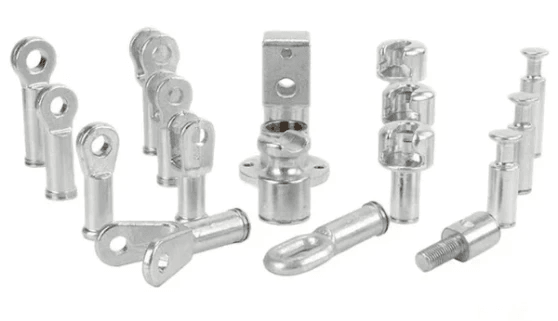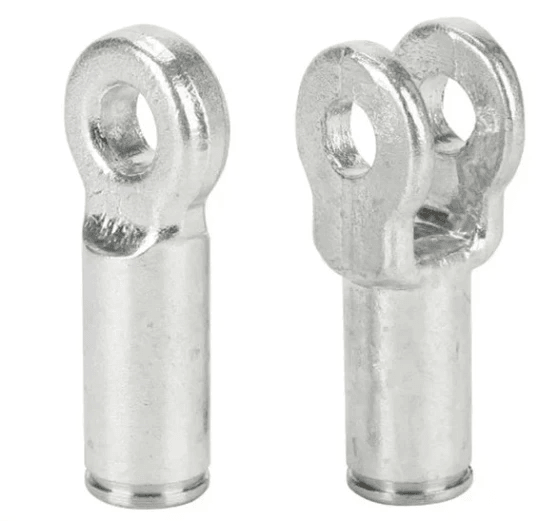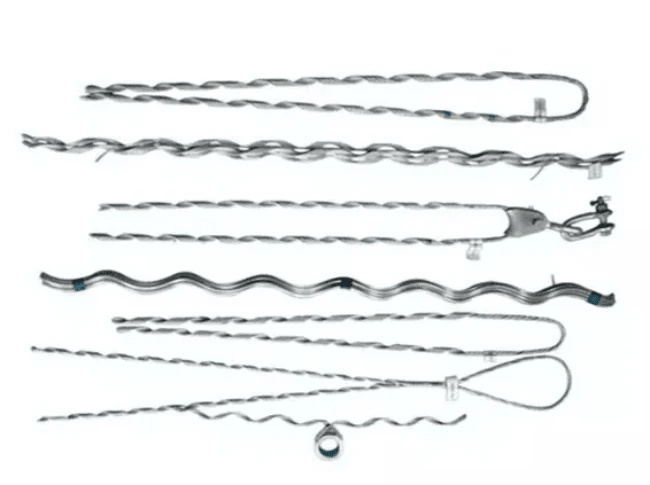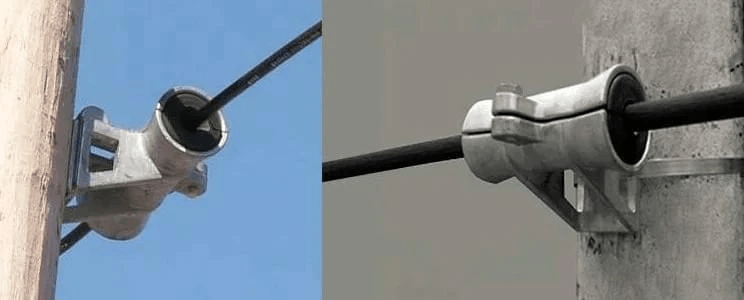Introduction

In the world of transmission lines, the unsung heroes are often the transmission line bolts that hold everything together. These seemingly small components play a crucial role in ensuring the stability and safety of power transmission systems. Regular inspections of these bolts are not just important; they’re essential for preventing costly failures and ensuring that what holds up transmission lines remains secure.
Importance of Transmission Line Bolt Inspections
Transmission line bolt inspections are vital for maintaining the integrity of electrical infrastructure. Over time, environmental factors and mechanical stress can lead to wear and tear on these bolts, making regular checks a necessity rather than an option. Ignoring this aspect can lead to significant issues, including line failures that could disrupt power supply and incur hefty repair costs — so how much is it to fix leaking transmission lines? The answer is often more than you’d like to spend.
Understanding Transmission Parts
To appreciate the importance of transmission line bolts, it's essential to understand their role among other transmission parts. These bolts connect various components within the system, ensuring they function cohesively under varying conditions. By grasping how these parts work together, one can better comprehend why wholesale transmission parts from reputable distributors are crucial for maintenance and repairs.
Safety First: Best Practices
Adopting best practices not only protects you but also ensures that your inspection process is efficient and effective. This means wearing appropriate personal protective equipment (PPE) and following established protocols while working at heights or in potentially hazardous environments.
The Basics of Transmission Line Bolts

Understanding the fundamentals of transmission line bolts is crucial for anyone involved in the maintenance and inspection of transmission systems. These bolts play a vital role in securing various components, ensuring stability and safety in the vast network of transmission lines. Without proper knowledge about these small yet mighty fasteners, you may find yourself questioning, What holds up transmission lines?—and that’s not a good place to be!
What are Transmission Line Bolts?
Transmission line bolts are specialized fasteners designed to secure components within electrical transmission systems. They are engineered to withstand extreme conditions, including weather fluctuations and mechanical stress, while maintaining their integrity over time. Essentially, these bolts ensure that everything stays in its rightful place, contributing significantly to the overall safety and reliability of the system.
Common Types of Transmission Bolts
There are several types of transmission bolts used across various applications, each tailored for specific needs. For instance, hex head bolts provide a solid grip for tools during installation or removal, while eye bolts allow for easy rigging and support connections. Additionally, when sourcing your hardware from wholesale transmission parts suppliers, you'll encounter variations like lock nuts and flange bolts—each designed to address unique challenges encountered in the field.
Why Proper Inspections Matter
Proper inspections of transmission line bolts are essential for preventing catastrophic failures that could lead to costly repairs or even hazardous situations. Regular assessments help identify wear and tear early on; ignoring these signs can lead to questions about how much it is to fix leaking transmission lines—a scenario best avoided! By prioritizing inspections and adhering to best practices with your chosen transmission parts distributors, you can save both time and money while ensuring a safer working environment.
Tools Needed for Inspection

Essential Tools for Inspecting Bolts
To effectively inspect transmission line bolts, a few essential tools should always be at hand. A high-quality torque wrench is crucial for measuring the tension of the bolts accurately; after all, proper torque is what holds up transmission lines! Additionally, a caliper can help measure bolt diameter and thread depth, while a visual inspection tool like a magnifying glass can aid in spotting wear and damage that might not be visible to the naked eye.
Don’t forget about safety gear as well—gloves and goggles are must-haves when handling potentially hazardous materials. Investing in reliable tools not only enhances your efficiency but also ensures that you’re adhering to safety protocols during your inspections. Quality tools will save you time and money in the long run by preventing costly mistakes and ensuring that your transmission parts are in top-notch condition.
How to Use Torque Wrenches Correctly
Using torque wrenches correctly is paramount when working with transmission bolts; improper usage can lead to disastrous consequences down the line. First things first: always calibrate your wrench before use—this ensures accuracy when measuring how much force you apply while tightening bolts. When applying torque, remember to pull steadily rather than jerking; this helps maintain consistent pressure on the bolt.
Additionally, familiarize yourself with the manufacturer’s specifications for each type of bolt you’re inspecting; knowing how much torque each should have allows for effective monitoring of their condition over time. It’s also wise to keep track of any adjustments made during inspections so you have records if issues arise later on—documentation is key! By mastering proper techniques with torque wrenches, you'll ensure that your transmission line bolts remain secure and functional.
Finding Quality Wholesale Transmission Parts
When it comes to sourcing transmission parts distributors for wholesale transmission parts, quality should never be compromised over cost savings—after all, these components are essential for safe operations! Start by researching reputable suppliers who specialize in high-quality transmission line bolts; reading reviews from other customers can provide insight into their reliability and product durability.
Step-by-Step Inspection Process

Visual Inspection Techniques
Visual inspections are your first line of defense when checking transmission line bolts. Begin by examining each bolt for any visible signs of corrosion, rust, or unusual wear patterns that could indicate a problem. Pay close attention to the surrounding areas as well; sometimes, issues with transmission bolts can stem from adjacent components that may affect their performance.
Another important aspect of visual inspection is checking for proper alignment and tightness. Ensure that all bolts are seated correctly and not loose, as this could compromise the entire structure's stability. Remember, a quick glance might miss critical details—take your time to scrutinize every inch!
Lastly, document any findings during your visual inspection for future reference. Keeping records helps you track changes over time and can be invaluable when consulting with Transmission Parts Distributors about necessary replacements or repairs.
Measuring Bolt Tension and Torque
Once you've completed your visual checks, it's time to get technical with measuring bolt tension and torque! Using a calibrated torque wrench is crucial here; it ensures that you're applying the correct amount of force when tightening or loosening transmission line bolts. Over-torquing can lead to bolt failure while under-torquing may cause them to loosen over time.
To measure tension accurately, follow manufacturer specifications for each type of bolt used in your setup—different transmission bolts have varying requirements based on their size and material composition. If unsure about these specs, consult documentation from reputable Wholesale Transmission Parts suppliers or ask an industry professional for guidance.
Regularly measuring bolt tension not only enhances safety but also prolongs the lifespan of both the bolts themselves and surrounding components in your system. So next time someone asks how much it is to fix leaking transmission lines due to improper maintenance? You’ll know it’s far more expensive than investing in proper inspections!
Identifying Signs of Wear and Damage
Identifying signs of wear and damage on transmission line bolts is crucial for maintaining operational safety. Look out for common indicators such as cracks or elongation on the threads—these are clear red flags that something isn't right! Additionally, check for deformation at the head or shank area; this could signal excessive stress that needs immediate attention.
Another thing to watch for is discoloration caused by overheating or chemical exposure which can weaken structural integrity over time—don't ignore those warning signs! If you notice any unusual characteristics during inspections, mark them down so you can discuss potential solutions with Transmission Parts Distributors later on.
Finally, remember that neglecting worn-out bolts could lead not just to minor inconveniences but also catastrophic failures down the road! Regular assessments will save both money spent on repairs (like fixing those pesky leaking transmission lines) and ensure safe operations across all levels.
Safety Protocols During Inspections

Personal Protective Equipment Requirements
Before diving into the inspection process, it's crucial to equip yourself with the right personal protective equipment (PPE). This includes hard hats, gloves, goggles, and steel-toed boots—each serving as a barrier against potential dangers associated with working on transmission line bolts. Wearing high-visibility clothing is also recommended so that you remain easily seen by others in the vicinity, especially when working near busy areas or roadways.
Additionally, using fall protection gear such as harnesses and lanyards is essential when inspecting bolts at heights. This equipment helps prevent accidents from falls while ensuring you have a secure method for accessing elevated components of transmission lines. Remember: investing in quality PPE not only keeps you safe but also reflects your commitment to maintaining high standards during inspections.
Working at Heights: Safety Guidelines
Working at heights presents unique challenges that require specific safety guidelines tailored for those handling transmission line bolts. Always ensure that ladders and scaffolding are stable and properly secured before climbing; this will help prevent slips and falls during your inspection tasks. Additionally, consider using aerial lifts when necessary—they provide a safer alternative for reaching elevated structures without compromising your stability.
It's also wise to establish a clear communication system among team members while working at heights. This ensures everyone knows their roles and can alert one another about potential hazards or changes in conditions around them. And don't forget: regular training on height safety procedures can be invaluable in preparing your team for any unexpected situations that may arise during inspections.
Emergency Procedures for Unsafe Conditions
Even with the best precautions in place, emergencies can still occur during inspections of transmission line bolts. Establishing clear emergency procedures beforehand allows everyone involved to respond swiftly and effectively should an incident arise. Make sure all team members are familiar with evacuation routes and emergency contact numbers; this knowledge can save precious minutes if an urgent situation occurs.
In case of severe weather or other unsafe conditions like electrical storms or strong winds, know when it's time to suspend work altogether—no bolt inspection is worth risking personal safety! Regular drills simulating emergencies will help reinforce these procedures so that everyone knows what steps to take when it counts most.
By prioritizing these safety protocols during inspections of transmission line bolts, you'll not only protect yourself but also contribute positively toward maintaining operational integrity within your organization’s infrastructure.
When to Replace Transmission Line Bolts

Transmission line bolts are crucial components that hold up transmission lines, ensuring they remain stable and secure. However, like any mechanical part, they have a lifespan and can wear out due to various factors such as weather conditions, vibration, or corrosion. Knowing when to replace these bolts is essential not only for the integrity of the transmission system but also for safety.
Signs Indicating Bolts Need Replacement
There are several telltale signs that your transmission bolts may need replacing. First and foremost, look for visible signs of rust or corrosion; if you see significant deterioration on the surface, it’s time to take action. Additionally, if you notice any unusual vibrations during operation or if the bolts appear loose despite proper torque settings, these could indicate underlying issues that warrant a replacement.
Another red flag is when you hear abnormal noises coming from the transmission area; this could suggest that something is amiss with the transmission line bolts holding everything together. Cracking or deformation around bolt heads can also signal fatigue and stress on the metal. Keeping an eye out for these indicators will save you from more significant problems down the road.
Consequences of Ignoring Bolt Issues
Ignoring issues with your transmission line bolts can lead to catastrophic failures that are both costly and dangerous. If a bolt breaks or loosens significantly while in operation, it can cause parts of the transmission system to fail abruptly—potentially leading to accidents or damage to other components. Not only does this put lives at risk, but it also results in expensive repairs and downtime.
Moreover, neglecting bolt maintenance can lead to further complications such as leaks in your system—particularly relevant when considering how much it costs to fix leaking transmission lines! The longer you wait to address worn-out bolts, the more extensive (and expensive) repairs become necessary down the line. So don’t let a small issue snowball into a massive headache; stay vigilant!
Cost Considerations: How Much is it to Fix Leaking Transmission Lines?
When assessing how much it is to fix leaking transmission lines caused by faulty transmission line bolts, costs can vary widely based on several factors including location and extent of damage. On average, repairing leaks might set you back anywhere from $150 to over $1,000 depending on whether you're just replacing a few bolts or facing more extensive repairs throughout your system.
Wholesale Transmission Parts can help mitigate some costs by providing affordable options for replacement parts without sacrificing quality; however, keep in mind that investing in high-quality parts from reputable Transmission Parts Distributors will pay off in longevity and reliability over time. Ultimately, while initial repair costs may seem daunting at first glance, addressing issues promptly saves money—and headaches—in the long run.
Conclusion

In conclusion, ensuring the integrity of transmission line bolts is essential for the safety and reliability of our power systems. Regular inspections not only help identify potential issues before they escalate but also maintain the overall efficiency of transmission lines. Remember, what holds up transmission lines is more than just bolts; it’s a comprehensive approach to maintenance that includes using quality parts and adhering to safety protocols.
Key Takeaways for Safe Inspections
When inspecting transmission line bolts, always prioritize safety by wearing appropriate personal protective equipment and following established guidelines. Understanding the different types of transmission bolts and their specific inspection needs can save time and prevent costly repairs down the line. Moreover, knowing how much it is to fix leaking transmission lines can motivate timely inspections, ensuring that problems are addressed before they become major headaches.
Resources for Quality Transmission Parts Distributors
Finding reliable wholesale transmission parts distributors is crucial for maintaining your equipment effectively. Look for distributors with a strong reputation in the industry who offer high-quality transmission parts at competitive prices. By sourcing your transmission line bolts from reputable suppliers, you can ensure that you’re getting durable components that meet safety standards.
The Role of Spark Fittings in Bolt Quality
Spark fittings play a pivotal role in enhancing the quality and performance of transmission bolts by providing better electrical conductivity and reducing corrosion risks. When selecting your transmission line bolts, consider those equipped with spark fittings to improve longevity under challenging conditions. Ultimately, investing in high-quality components not only supports efficient operations but also minimizes maintenance costs over time.

